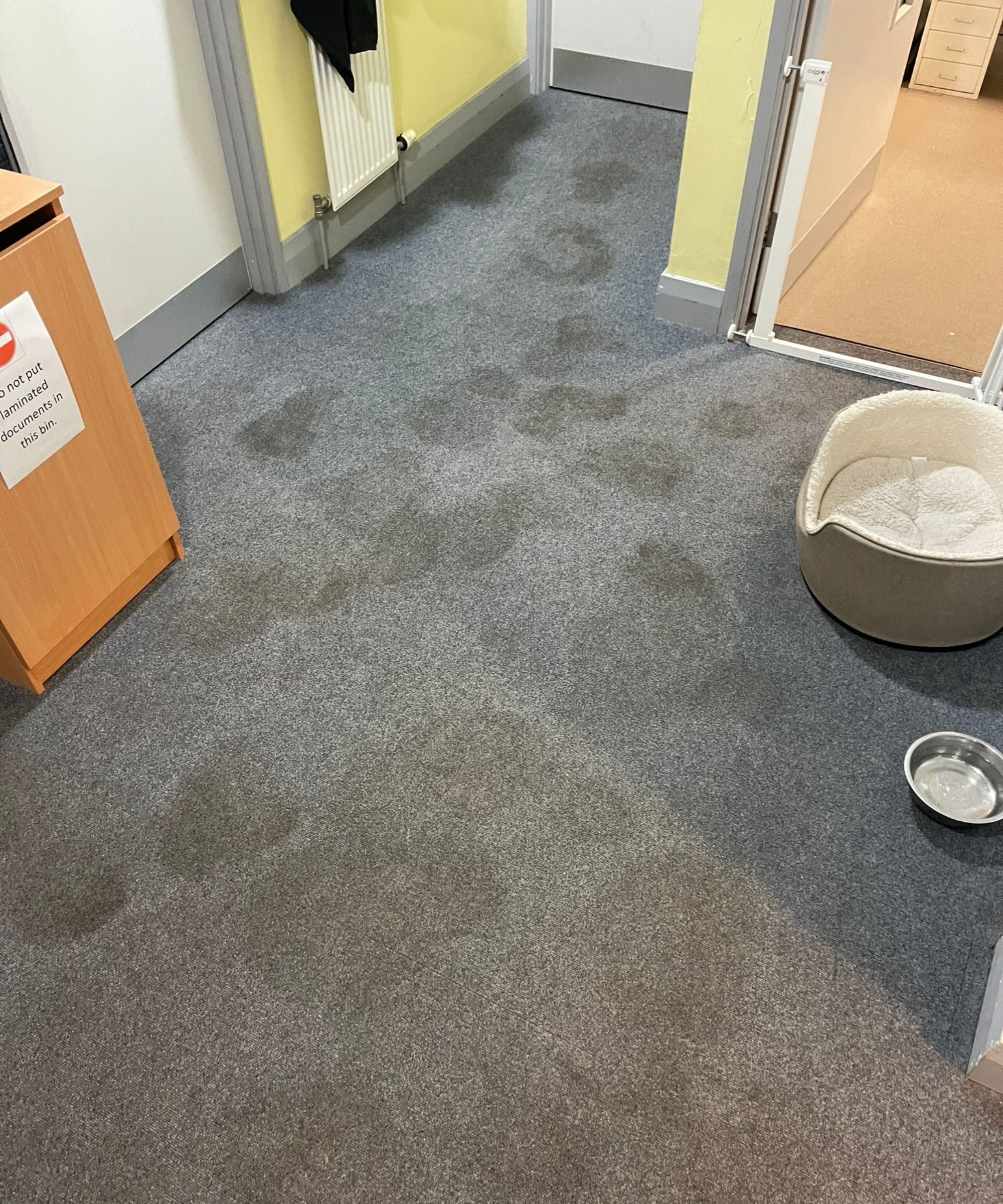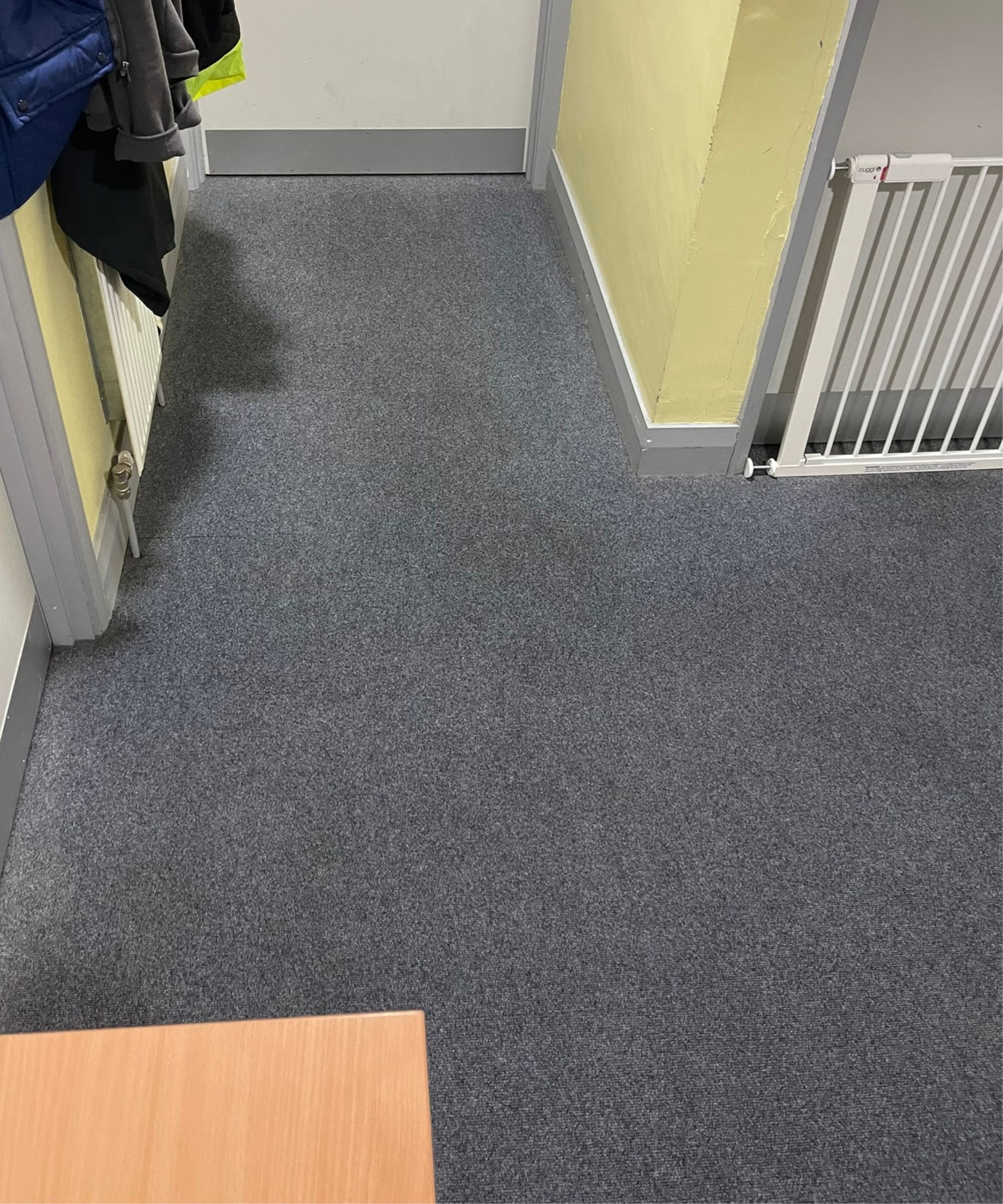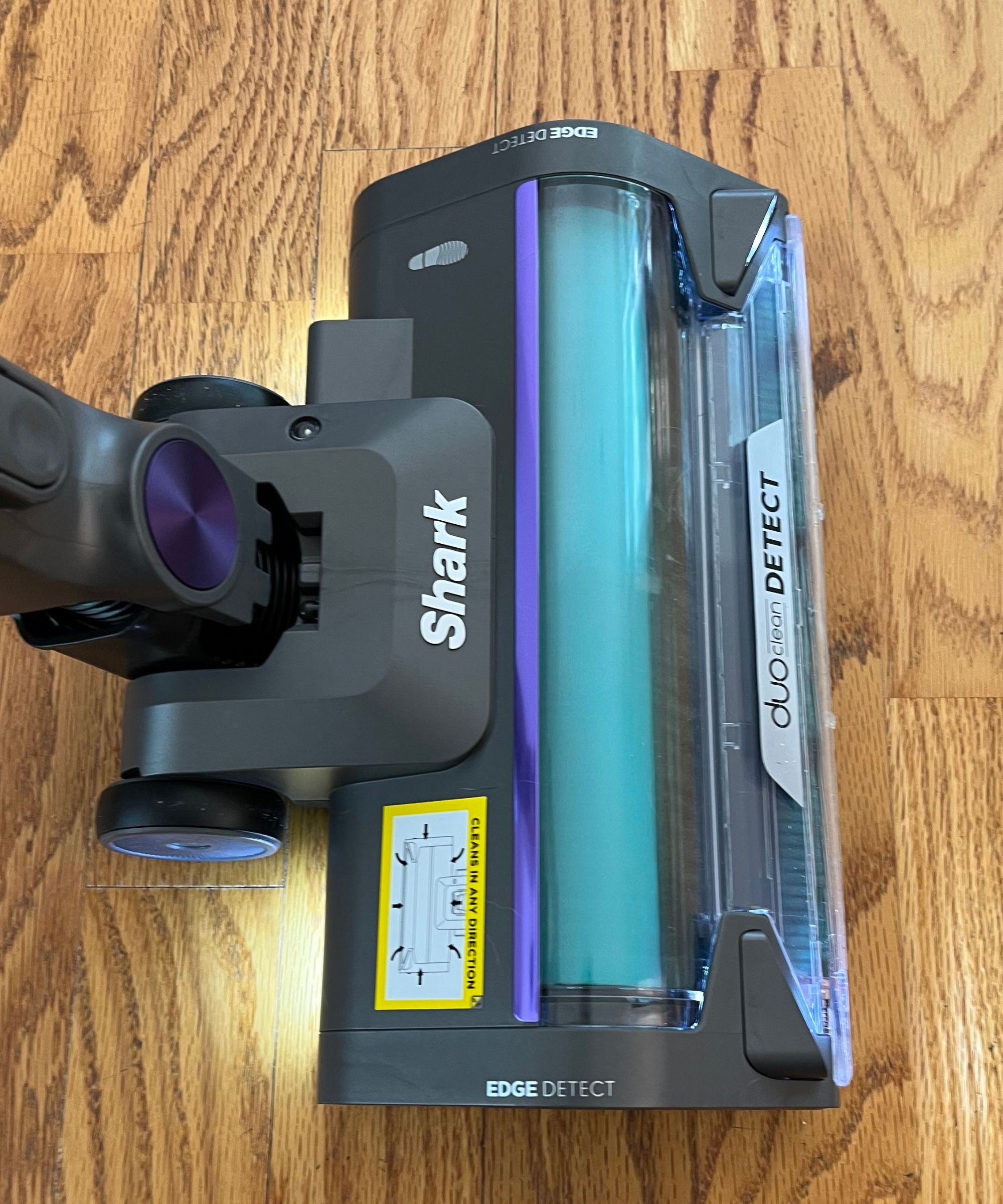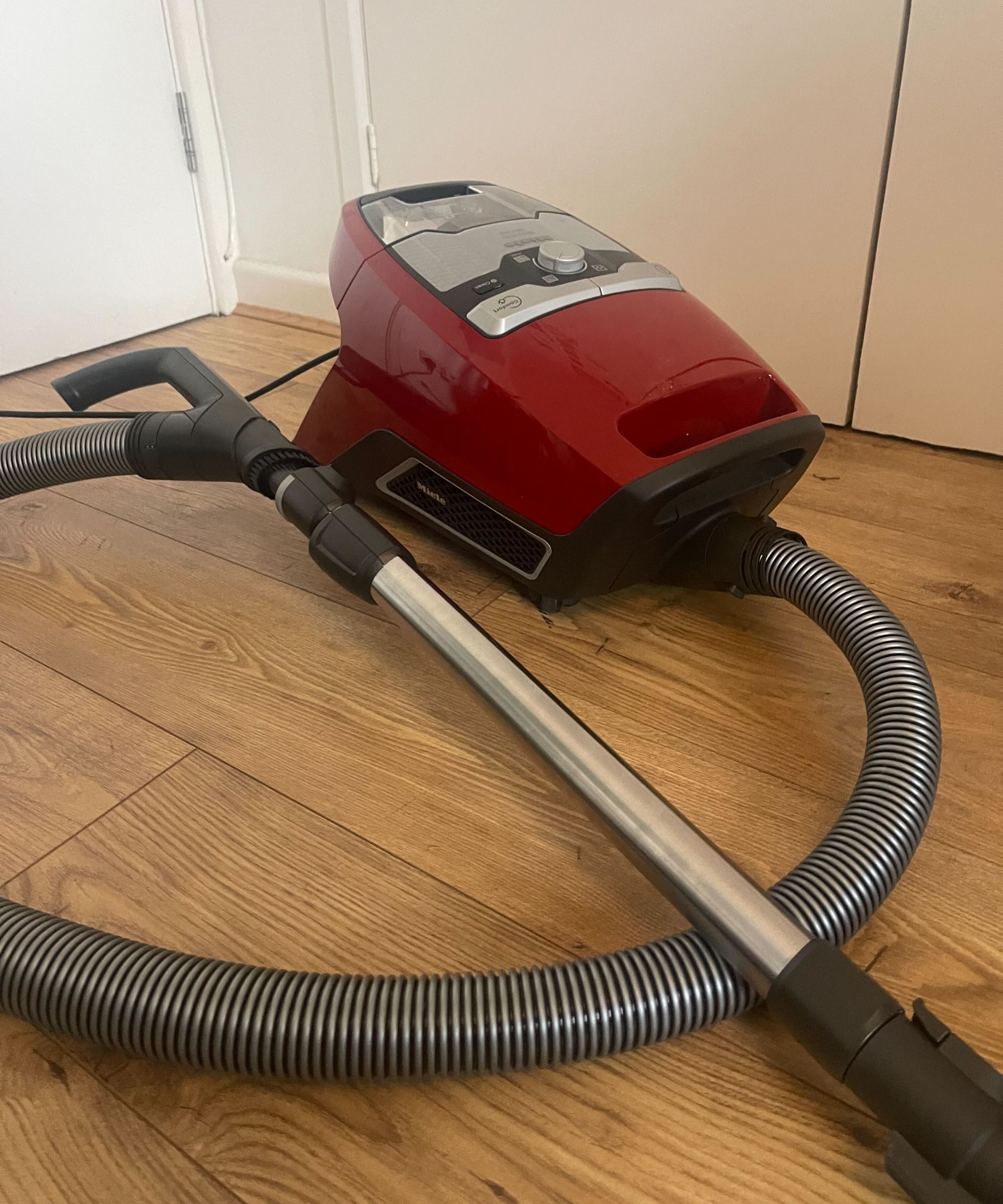How we test vacuum cleaners at Homes & Gardens – the testing methodology behind our 82 rigorous reviews (and rising)
From testing in pet shelter tests on real fur, to standardized pantry tests in our dedicated testing center, this is how we review vacuums

September 1, 2025: This article was updated with information on how a pet rescue center helps us get real-world vacuum testing results on pet hair and mess.
For proven, real-world results, we test vacuum cleaners in our homes, our dedicated test center, and in a local pet shelter that's full of cat and dog fur. It's our mission to find out exactly what each model is capable of in the real world, so we can provide accurate (and genuinely useful) recommendations, regardless of budget or household needs.
Our team of experts has 40 combined years of vacuum testing experience under its belt, so it's well-placed to offer trustworthy and tried-and-tested advice on which are worth the spend. We use standardized tests, so we can compare every vacuum objectively against each other to find out what really is the best vacuum cleaner.
We test cordless, upright, canister, handheld, and robot vacuums, as well as floor cleaners such as vacuum-mops and carpet cleaners. We evaluate every factor that a consumer needs to know, from hair wrapping nuisances to storage space required.
How we test vacuums at Homes & Gardens
Where we test vacuums
We test vacuum cleaners in our homes, in our dedicated test center, and in a local pet shelter.
In our test center, we vacuum standardized amounts of substances on low-pile carpet, linoleum, and hardwood floors (more on our vacuum tests below). This is how we assess each vacuum's cleaning performance, taking into account the suction power and efficacy of the floorhead and brushroll.
At home, we get a feel for how easily we can use the vacuum in real-world conditions. We gain an understanding over the longer term of whether it's a lightweight vacuum that can be easily carried upstairs, if it's maneuverable, what all the vacuum attachments do, and anything else a consumer would need to consider.
At Bristol Animal Rescue Centre, we can test each vacuum on large amounts of pet hair in a busy, real-world environment. Pet hair is vacuumed from low-pile carpet, medium-pile carpet, hard floors, and furniture. It's also a great opportunity to test each vacuum's ability to handle the messy conditions of a building with high foot traffic.
Design expertise in your inbox – from inspiring decorating ideas and beautiful celebrity homes to practical gardening advice and shopping round-ups.
Our US testers don't have access to our test center or the pet shelter, but instead are tasked to test vacuums on a variety of floor types and genuine pet hair in their own homes. Whether in the UK or the US, we all run our cleaning tests in the same way.
What we're looking for
We consider a vacuum's performance from a consumer-advocate perspective, meaning we take into account every factor that could affect the cleaning experience provided by each vacuum cleaner without bias towards the vacuum brand. We are on the consumer's side and want to tell them everything there is to know about a vacuum's performance, and whether it's worth the price tag.
Firstly, we're looking for the best vacuums to have a strong cleaning performance. Whether that's picking up small debris, large debris, or pet hair, the vacuum must be able to clear different messes in as few passes as possible. The best cordless vacuums and upright vacuums clear our test substances in a single forward pass.
The most common issue among all vacuums is hair wrapping around the brushroll. We look for vacuums that can reduce or completely prevent this problem, using anti-tangle brushroll (our vacuum jargon buster has more info on this) designs to make sure you're not manually removing hair and fur each time you vacuum.
A good multi-surface vacuum cleaner can clean across different floor types, although we take note of those that excel on certain surfaces, as they inform our guides of the best vacuums for hardwood floors and the best vacuums for carpet.
Maneuverability and ease of use are important, too. We assess vacuums on how easily you can carry them around the house, how well they get under and around furniture, how lightweight they are, and how easily they can be emptied and cleaned. We consider cord length or battery life too, as these affect how long you're able to clean between pauses.
Filtration is key to maintaining good air quality in your home. Tight filtration means a vacuum is able to capture more particle sizes, so that what gets vacuumed stays in the vacuum. Otherwise, the super-fine particles and common allergens will be re-released back into your home, circulating into the air you breathe.
We always recommend the best HEPA vacuums for this reason: These filters meet rigorous standards to capture 99.97% of particles as small as 0.3 microns, which includes many allergy triggers like dust, pollen and pet dander.
Cleaning a vacuum cleaner is essential maintenance to preserve its lifespan, so we take vacuums apart to find out how easy they are to clean. This is usually easiest with cordless vacuums as the parts are modular, but other upright and canister vacuums are designed for regular maintenance, too. We also consider how much space each vacuum takes up in storage.
And if a vacuum has any unique or smart features, we test them out to find out if they're genuinely useful or exaggerated gimmicks. For example, the best Dyson vacuums have a green laser that does an incredible job of revealing dust that the naked eye can't see, but they also have a particle counter that, while helpful, isn't a necessity.
Vacuum tests
We carry out performance tests for each vacuum cleaner and repeat them across carpet, linoleum and hardwood floors.
Flour and sugar:
We scatter a half cup of flour and sugar across each floor type to see how well a vacuum can handle powders and small debris. Not only are these common messes on the kitchen floor, they also act as a proxy for dust and dead skin. Flour is a great visual test because we can see when it gets stuck in the floorhead or internal parts, left behind on the floor, stuck in floor gaps, or skipped over completely. We can also see if it clogs up the filters. The filters on robot vacuums tend to cope less well so we may titrate this down to a sensible amount vs the size of the bot, such as one teaspoon.
Pantry:
We scatter a cup of cereal and lentils across each floor type to find out how well a vacuum can handle debris of different sizes. The cereal poses the biggest challenge: Some vacuums crush them down, some vacuums suck them up whole, and some ping them across the floor. Across the flour and sugar and pantry tests, what we're looking for is for the vacuum to clear it all in one pass. The more passes it needs, the lower we rate the vacuum. If it doesn't manage to suction up all of it, we note that in our review too.
Pet hair:
We test vacuum cleaners in a local pet shelter and in our homes with pets, to vacuum genuine pet hair in real-world conditions and find out whether each model can be considered the best vacuum for pet hair. This is where we can observe a vacuum's anti-tangle performance. Almost every vacuum cleaner is branded in a way that boasts its seemingly flawless performance on pet hair, but very few live up to the claim. We also assess how easily they can vacuum pet hair from carpet, one of the trickiest tasks a vacuum has to do.
Performance metrics:
We test a vacuum cleaner's airflow using an anemometer, which measures the speed air passes through in miles per hour. Of course, this isn't the only factor determining a vacuum's cleaning performance, but it demonstrates the level of suction power that the vacuum is capable of – outside of a brand's marketing claims. We test this at the main inlet valve of the vacuum cleaner with no attachments.
We also test the noise levels of each vacuum using the DecibelX app, in the lowest to the highest suction modes. A loud vacuum can be off-putting to some, especially those in small spaces and with nearby neighbors.
Attachments:
We test every attachment that's included with its vacuum. The crevice tool and dusting brush are the most common types, and the crevice tool doubles up as an excellent tester for suction power, as we can observe how effortlessly debris is sucked into the small intake nozzle. We assess whether any of them are the best vacuum attachments for pet hair, as mini motorized brushes and upholstery tools can often be a huge help to stay on top of pet hair at home.
General testing:
Outside of our standardized performance tests, we use each vacuum around the house to get a feel for its usability. We look at weight, maneuverability, smart features, dustbin emptying, battery life, cord length, noise levels, filtration, and how much space they take up in storage. Some of our testers have chronic pain, so they help us take note of any accessibility or grip issues to consider if you're hoping to purchase.
Every single factor a consumer might wonder the worth of is then considered against the price when we give it our final mark out of five. If a vacuum is good but the price is too extravagant to justify it, we'll note this in our rating. If a sub-$250 vacuum has decent cleaning performance, we'll rank it higher as it's rare for budget vacuums to clean well. We compare each vacuum's performance against other models at a similar price point, across the same and different vacuum types, depending on who each model would suit best.
This is also why we tend to test a bunch of vacuums of a particular type, such as cordless, in one go, so we can see the difference immediately between their performances.
Robot vacuum tests
We test the best robot vacuums in our own homes with mixed floor types, real-world messes, and homes with pets. This gives us a genuine, complete understanding of each robot's capabilities and what they can bring to different households with varying cleaning needs.
We test a robot's vacuuming capabilities using a quarter cup of:
- Sugar: To test for fine debris
- Lentils: To test for medium debris
- Cereal: To test for large debris
Using these standardised tests shows us specifically how each robot handles certain materials, as we can see whether the debris gets vacuumed up smoothly, whether anything gets left behind, or whether the robot scatters it around with its brushes.
We also assess the robot's day-to-day cleaning, taking note of how often we need to clean up after it, and how the floors look and feel afterwards.
To find the best vacuum for pet hair, we observe how much fur each robot can pick up from hard floors, low-pile carpet and high-pile carpet. We use either our own vacuums or a carpet scraper to see how much hair is left behind, and we take note of whether fur wraps around the roller or not (a major challenge when keeping a home clean with pets).
For robot vacuums with mopping abilities, we create two stains on hard floors using ketchup and mustard, as they have different properties in how they stain and spread. We can see how long it takes to clean each stain, how much gets left behind, and whether the robot can clean itself afterwards.
Much like with vacuuming, we assess the robot's mopping abilities day-to-day over the course of two weeks, evaluating if the floor is wet or sticky afterwards, how well it cleans spills and stains, how long it takes to dry, and how often we need to mop the floors ourselves.
Outside of cleaning, we assess each robot's smartphone app (the hub for controlling and monitoring the robot), what features are on offer (and how well they work), how easily it can navigate and build home maps, and how data is handled.
We measure noise levels using the DecibelX app, when in normal operation and when self-emptying. We also assess the cleaning station's features and how much input is needed from us to keep the robot clean, well-maintained, and operating at its best.
Vacuum-mop tests
Our vacuum-mop tests include five substances with a variety of consistencies and properties. Cleaning substances of varying thicknesses shows what the cleaner's capable of as a vacuum-mop may be adept at cleaning thin sauce spills like vinegar, but awful at cleaning trickier messes like a broken egg. The best vacuum-mops can clean all types of substances.
We test using:
- 1 tablespoon of ketchup
- 1 tablespoon of mustard
- 2 tablespoons of chunky tomato and vegetable pasta sauce
- 1 egg, dropped from 5 feet
- 1 cup of milk and cereal
The broken egg and the cup of milk and cereal pose the biggest challenges for vacuum-mops and are a vital test. Who hasn't smashed an egg or fumbled a glass of milk at home before?
The combination of real-world solids and liquids tests the vacuum's ability to remove high volumes of mess, and the thick, greasy consistency of the egg tests how powerful the vacuum's raw suction is.
Similarly to regular vacuums, we test their usability, including how flexible they are, how easy it is to empty and refill the water tanks, how slippery the floor is left, and how long it takes to dry.
We note anything that might be difficult if you suffer mobility or pain, too, such as lifting a heavy vacuum to access an element, or bending down to fill up a water tank.
Carpet cleaner tests
We carry out two tests for our carpet cleaners: one across a set of substances, and another at the pet shelter. We carry out each substance test twice to account for old and new stains, as we let one set of them sit for at least two hours. We test:
- Quarter cup of red wine
- Half cup of cola
- Half cup of marinara sauce
At the pet shelter, we evaluate each models' performance when cleaning the messes caused by pets and high foot traffic. This is how we determine the best carpet cleaners for pets, as the most comprehensive models will be able to remove years-old pet stains and revive a carpet to its original feel and color.


And again, we evaluate each carpet cleaner's ease of use. These models come with a bit of admin, including removing solids trapped in the floorhead, washing out dirty water tanks, and avoiding leakage between cleans.
How long we test for

We test vacuums for weeks at a time to develop a complete understanding of its strengths and weaknesses.
Often, we test a vacuum for two to four weeks in our homes outside of our usual standardized tests to get a feel for its abilities and any quirks over time. This gives us a deeper understanding of any snags that might show up after prolonged use, like if a vacuum cleaner loses suction as the dustbin fills or leaves a nasty smell too often.
How we update reviews

We update our reviews over time to note durability, loss of suction, and how each vacuum compares to newer releases.
At least six months after we publish a review, we revisit the original author to find out how they've got on with the vacuum cleaner over time. This raises important points on durability, how easy they are to clean, and how they compare to newer releases.
If the author hasn't kept the vacuum, we'll retest it with our latest testing methodology, which we update at least yearly.
Our testing team
Our team of product testers has years of experience reviewing vacuum cleaners, as well as a wealth of products and appliances that can transform our day-to-day lives. We are not paid to test any product ,and each review is completely impartial.

I am Homes & Gardens' home tech editor, covering vacuums and floorcare on a near-daily basis. I've spent 250+ hours testing 28 cordless, upright, canister, handheld and robot vacuums, as well as carpet cleaners and vacuum-mops.

Punteha heads the Solved section at Homes & Gardens, writing, editing and commissioning features and guides that cover cleaning, organizing and anything practical around the house. She's limited in mobility, suffers chronic pain and has tested the best robot vacuums across eufy and Switchbot to automate more of her home cleaning, as she has a busy household with children and cats.

Alex's first job in product testing was at the Good Housekeeping Institute, primarily testing vacuum cleaners. This involved vacuuming the same yard of carpet dozens a times a day. To date, he's spent around 1,000 hours testing more than 30 vacuum cleaners.

Helen is a seasoned product tester who's reviewed more than 100 vacuums since she began in 2007. She reviewed the best vacuum we've ever got our hands on, the Dyson Gen5detect.

Camryn is a US-based freelance writer and product reviewer who has been testing home goods and vacuums for five years. In this time, she's tested more than 50 vacuum cleaners in her busy, pet hair-filled home with two dogs and a cat.

James is a US-based product reviewer who's been testing products since 2021, and in that time has spent more than 100 hours testing 20+ vacuum cleaners.

Jaclyn has been testing vacuums for four years and has now reviewed more than 16 vacuums including some of our favorite models.
Next, learn how to choose the best vacuum cleaner for your needs, to make sure you're finding the model that's a good fit for your home.

Dan is the Home Tech Editor for Homes & Gardens, covering all things cleaning, sound, smart home, and air treatment across the Solved section.
Having worked for Future PLC since July 2023, Dan was previously the Features Editor for Top Ten Reviews and looked after the wide variety of home and outdoor content across the site, but their writing about homes, gardens, tech and products started back in 2021 on brands like BBC Science Focus, YourHomeStyle and Gardens Illustrated.
They have spent more than 400 hours testing and reviewing vacuums, soundbars and air purifiers for Homes & Gardens.
Dan has a BA in Philosophy and an MA in Magazine Journalism. Outside of work, you'll find them at gigs and art galleries, cycling somewhere scenic, or cooking up something good in the kitchen.
You must confirm your public display name before commenting
Please logout and then login again, you will then be prompted to enter your display name.
